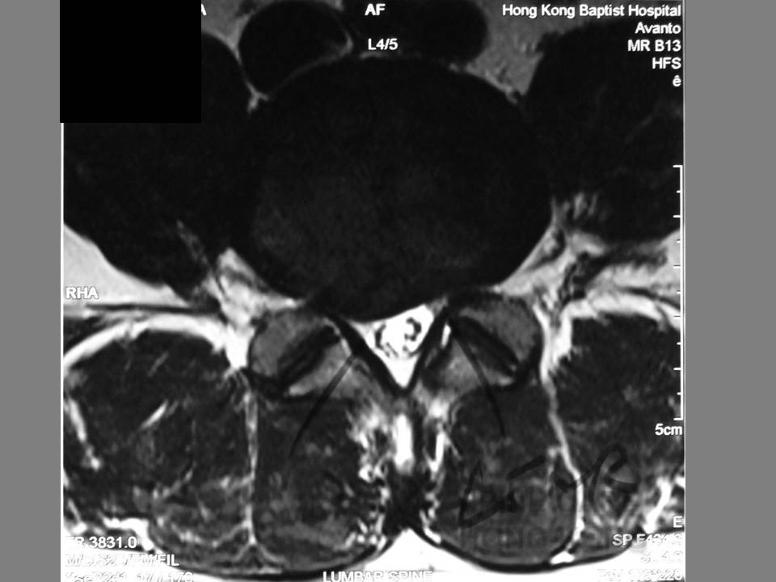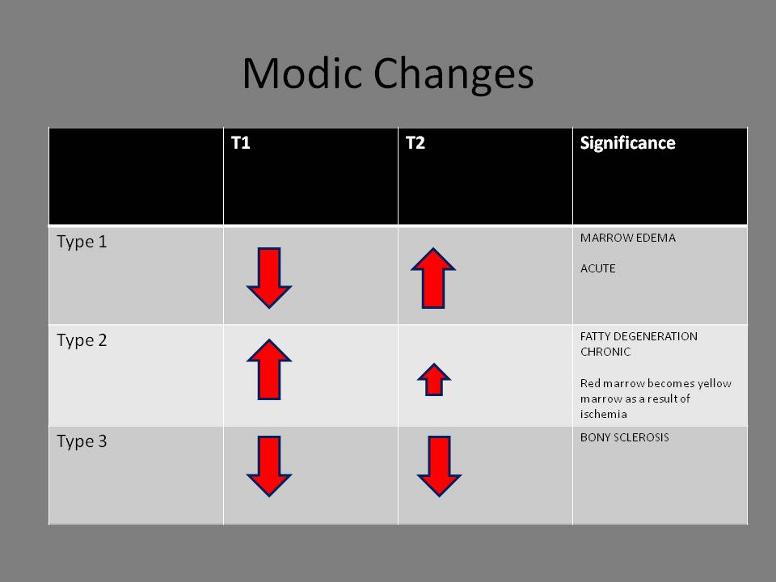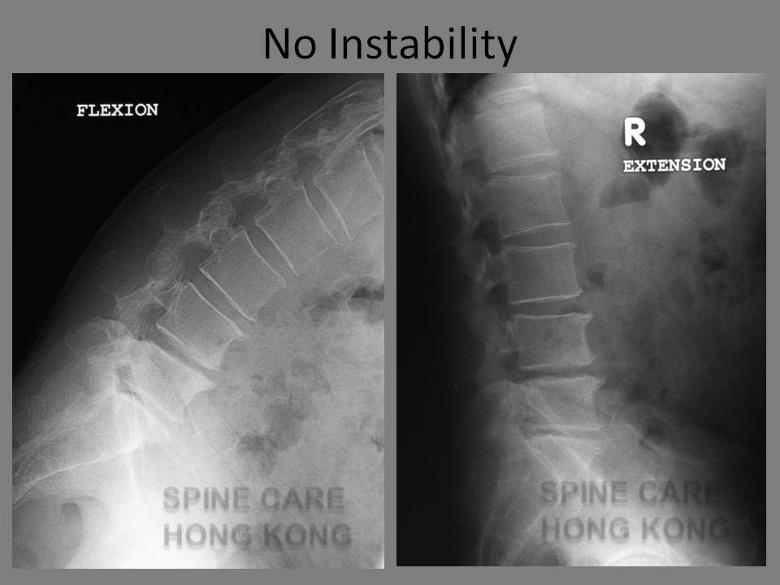

|
Lumbar Spondylosis and Spinal Stenosis |
|
NORMAL ANATOMICAL RELATIONSHIPS OF DURAL SAC AND SPINAL NERVE ROOTS |

|
MECHANISM OF LATERAL CANAL / SUBARTICULAR STENOSIS |

|
DISC DEGENERATION and SPINAL STENOSIS
Ageing or degeneration of the spine otherwise referred to as lumbar spondylosis is commonly as the direct result of disc ageing or degeneration. This process will usually begin in the 3rd decade and by the age of 50 years 95% of the population will have disc degeneration. As intervertebral discs degenerate they depressurize and abnormal shear forces are generated across the bone endplates. This leads to development of traction osteophytes and encroachment into the spinal canal. The disc also loses height, this causes undue stress over the facet joints with resultant facet degeneration and hypertrophy due to a combination of facet osteophyte formation and facet capsular hypertrophy. The end result is loss of vertical height and loss of canal dimensions most severe over the lateral part of the canal otherwise known as the subarticular region. This causes the most usual form of canal stenosis (lateral canal stenosis). In a proportion of symptomatic individuals the role of developmental (congenital) canal stenosis and a trefoil shaped spinal canal also contributes significantly to the development of symptomatic stenosis. In those with trefoil shaped canals from L3 to L5 vertebral levels there is an increased tendency to develop symptomatic stenosis from facet degeneration and arthropathy. |
|
INTERVERTEBRAL DISC AGEING |


|
2nd Decade |
|
4th Decade |
|
Case Illustration:
Male mid fifties Self Employed Truck Driver Main complaint of back pain with right leg numbness He cannot walk or stand straight and his walking tolerance is getting progressively worse now around 15-20 mins then he needs to rest Numbness radiates to right foot dorsum ( L5 dermatome)
Physical Examination: Tenderness over the lower lumbar spine with right > left side paraspinal muscle spasm Mild weakness big toe dorsiflexion grade 5- Straight leg raise 30 degrees over right leg with pain to L5 dermatome Deep Tendon Reflexes Normal |

|
Diagnosis: Right L4-5 lateral canal stenosis by a prolapsed lumbar intervertebral disc Compression of right L5 traversing root with radicular symptoms Mechanical type back pain (note Modic type endplate changes) |


|
NORMAL L5 VERTEBRA |
|
TREFOIL L5 VERTEBRA |
|
Developmentally normal L5 vertebra: Note rounded triangular apprearance of canal cross section
Compare and contrast to a developmental variant in which the canal cross section is trefoil in shape. With the development of facet arthropathy the lateral canal or recess will tend to be obliterated in the trefoil variant. |
|
Ventral impingement from ageing and bulging intervertebral disc
Dorsal impingement from ligamentum flavum centrally and more significantly facet joint hypertrophy and degeneration posterolaterally |
|
Copyright © 2008 Spine Care Hong Kong |







|
SPINE CARE HONG KONG |
|
ACCURATE DIAGNOSIS, STRUCTURED TREATMENT |

